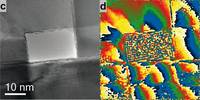New Paper in Angewandte Chemie, dedicated to Professor Helmut Schwarz on the occasion of his 70th birthday
The functionalization of methane remains a challenging target from an academic as well as an industrial point of view.
New concepts for the catalytic activation of C-H bonds are needed to overcome the current limitations in selectivity, which hamper the broad application of methane coupling for the production of olefins from sustainable resources like natural gas and organic waste.
Among the various inorganic materials that have been evaluated as heterogeneous catalysts for the oxidative coupling of methane (OCM), alkaline earth oxides doped with alkali elements or transition metal ions have received particular attention.
High reaction temperatures (973–1273 K) are needed. However, the high temperature is not required for C-H activation, which may aided by coordinatively unsaturated sites already at low temperature, but rather for recovery of an active catalyst surface free of adsorbed hydroxides and carbonates. Under the harsh reaction conditions, oxide catalysts like Li- MgO undergo fast deactivation due to sintering promoted by water, which is an unavoidable reaction product.
In the present work, the Schlögl group put the concept to test with powder catalysts working at high temperature (T=1023 K). They synthesized doped magnesium oxide as it has been investigated frequently in OCM. Pure magnesium oxide is deactivated at this temperature quite rapidly and reaches a stationary state after a few minutes to several hours depending on the applied contact time and the initial nanostructure of the magnesium oxide
See also:
Research\Selected Research Highlights

